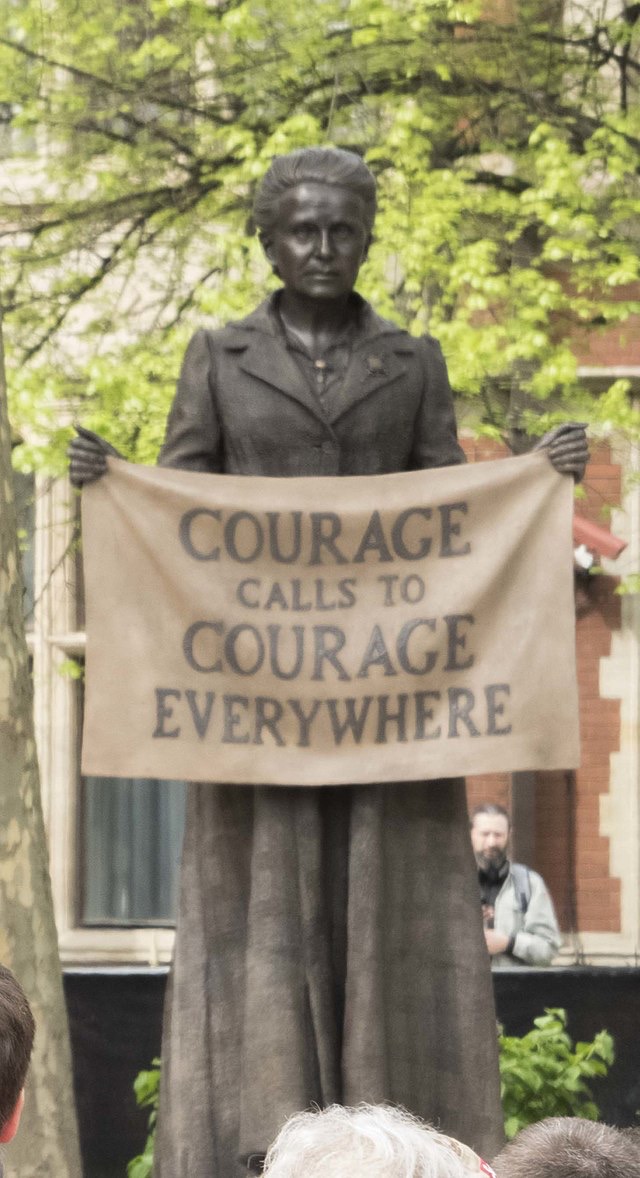Protest Shakes the Heart of Westminster
In a dramatic show of resistance, trans rights activists defaced the statue of suffragette Millicent Fawcett in London’s Parliament Square during a mass protest against the UK Supreme Court’s recent ruling redefining the legal meaning of “woman.” The demonstration, dubbed an “emergency protest,” saw thousands of activists flood central London on April 19, 2025, in response to what many are calling a direct attack on transgender rights in Britain.
As emotions ran high, the symbolic act of defacing a statue representing one of the UK’s foremost pioneers of women’s rights became the flashpoint in a broader, nationwide debate about gender identity, legal protections, and inclusivity.
What Sparked the Protest?
Supreme Court Defines “Woman” Based on Biological Sex
The protests were triggered by a landmark decision from the UK Supreme Court, which ruled that under the 2010 Equality Act, the word “woman” refers exclusively to biological sex. This interpretation means transgender women—even those holding Gender Recognition Certificates (GRCs)—can be lawfully excluded from certain single-sex services and spaces, including bathrooms, hospital wards, sports, and shelters, where the exclusion is deemed “proportionate and justified.”
The ruling followed a legal challenge against a 2018 Scottish law requiring gender-balanced representation on public boards, which had included transgender women as part of its “female quota.” The court ruled that this was incompatible with existing UK equality law.
🔗 Full ruling breakdown – AP News
Protesters Descend on Parliament Square
20,000+ Rally in ‘Emergency Demonstration’
Over 20,000 people gathered in Parliament Square, carrying signs like “Trans Rights Are Human Rights” and “No Justice Without Inclusion.” The rally included powerful speeches, moments of silence, and acts of civil disobedience. But none drew more attention than the defacement of the statue of Millicent Fawcett—a towering figure in the British suffragette movement.
Activists spray-painted slogans including “Trans Liberation Now” and “Decolonise Gender” across the base of the statue, with some adorning it in the colors of the transgender pride flag. Though controversial, the action was meant to highlight what many activists see as hypocrisy in celebrating past struggles for women’s rights while failing to protect trans women today.
📸 Telegraph coverage – Statue defaced at trans protest
The Symbolism of Defacing the Fawcett Statue
A Clash of Feminist Generations?
Millicent Fawcett led the peaceful campaign for women’s suffrage in Britain and is often remembered as a symbol of progress and justice. But some in the trans community argue that today’s feminist icons must also stand for transgender inclusion—or risk reinforcing outdated, exclusionary definitions of womanhood.
Activist speakers during the protest called attention to what they describe as “TERF feminism”—a term used to describe feminists who exclude trans women from their advocacy. The statue defacement, while controversial, was framed by organizers as an act of protest against systemic exclusion, not against Fawcett’s legacy itself.
Reactions Across the Spectrum
Divided Opinions on the Protest’s Message
While many supporters of trans rights applauded the protest as a vital response to what they see as institutionalized discrimination, critics—including some women’s rights campaigners—condemned the defacement of the Fawcett statue as disrespectful and counterproductive.
Feminist author and activist Julie Bindel stated, “You don’t build a movement by tearing down the legacy of another. There’s room for both gender rights and sex-based protections.”
In contrast, protester and trans woman Sophie Gibbs, 19, responded, “If Fawcett were alive today, she’d be fighting with us, not against us. This isn’t about disrespect—it’s about demanding justice for all women.”
Institutional Fallout and Government Response
New Guidelines and Policy Changes
In the wake of the court’s decision and public backlash, the Equality and Human Rights Commission (EHRC) announced it will release new guidance for public institutions on managing trans rights in light of the ruling. Simultaneously, British Transport Police stated that same-sex searches will now be conducted based on biological sex, intensifying the debate around trans inclusion in public services.
🔗 Guardian report – EHRC and Police policy shift
The Role of Youth Activism
Trans Kids Deserve Better Leads the Charge
The youth-led group Trans Kids Deserve Better (TKDB) played a central role in organizing the demonstration. Known for bold actions like hanging a “SMELLegraph” banner on the offices of The Telegraph and releasing crickets at an anti-trans event, TKDB has quickly become one of the UK’s most vocal and visible trans rights organizations.
Their involvement highlights the generational shift in LGBTQ+ activism, where Gen Z voices are increasingly taking the lead in shaping national discourse.
Conclusion
A Historic Protest, a Heated Debate
The defacement of the Millicent Fawcett statue during London’s trans rights protest may have divided opinion, but it undeniably elevated the urgency of the conversation around gender, law, and inclusion in the UK.
Whether seen as defiant or disrespectful, the act underscored a broader truth: trans people are demanding visibility, recognition, and full protection under the law. And they won’t be silenced.
As the government, courts, and public reckon with the implications of the Supreme Court’s ruling, one thing is clear—Britain’s battle over gender identity is far from over.
FAQs
What did the Supreme Court rule about gender?
It ruled that “woman” under the Equality Act 2010 refers only to biological sex, not gender identity, even for those with a GRC.
Why was the Millicent Fawcett statue defaced?
To protest what activists see as a disconnect between celebrating women’s rights while legally excluding trans women.
Was the protest peaceful?
Yes, the protest was largely peaceful, though it included symbolic acts like graffiti and statue defacement.
How has the government responded?
The EHRC is preparing new guidance, and police policies around same-sex searches are changing to reflect the ruling.
What is TKDB?
Trans Kids Deserve Better is a youth-led advocacy group focused on defending trans rights, particularly for minors.



